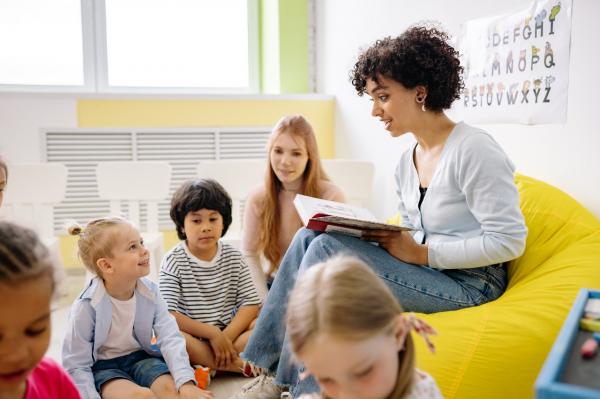Effectively Engage Children with Language | KS1 Literacy
‘Only children believe they’re capable of everything’
-Paulo Coelho
What an audience we have in the children we are fortunate enough to teach. An audience who are inquisitive, energetic, full of awe and wonder at the world around them – as well as instinctively wise and capable.
How we nurture this spirit in our interactions with the children we teach is of the utmost importance. Allowing children…
- to be themselves
- to pursue their interests
- to explore new concepts and skills in ways which enthral them
- to embrace experiences with open arms and thrive.
We too need to believe they are capable of everything.

‘A child’s mind is not a container to be filled but rather a fire to be kindled.’
-Dorothea Brande
Children need activities which activate their senses, which appeal to them and the way they naturally learn.
As children encounter their first experiences of reading and writing, the ways in which we present language can be extremely powerful, positive and life changing.
This starts right from their earliest days of being talked to, read to and told stories.
Immersing children in language so they can explore, discover, make connections and take ownership of language is vital to ensuring they are confident and capable readers and writers.
How does this work in the classroom?
Engage children’s senses as they explore language. Give children time to physically touch, play with, manoeuvre and talk about what they are doing.
Activities may include…
- Talking about, describing, organising and sequencing pictures which are relevant and appealing to their interests. This may be a made-up story, a retelling or a recount of something they’ve done.
- Role-playing their stories and recording their ideas in their own ways.
- Organising and rearranging sentences of increasing complexity… practically. Choosing the sentence starter, the images, symbols and punctuation. Saying it out loud, editing by physically moving elements around.
- Planning out different genres so they can be moved around as they are edited and changed so they are continually refining rather than feeling they are making mistakes.
- Modelling how sentences and stories can be built up as they are imagined, created and told. This includes being the author and talking out loud as children see the story unfold before their eyes and practically putting the sentences together. Meanwhile, the children will be listening to the way you think of and connect ideas, change your mind and edit, making the process of writing natural and achievable.
We need to give children every opportunity to develop memory, enabling them to picture and organise sentences in their heads,giving them that ownership and enjoyment of language in a fun, collaborative, purposeful setting.
This is paramount to their perception of language and their desire and ability to engage.
Mighty Writer is a highly visual and tactile resource.
It engages children by allowing them to use pictures and symbols to create and edit sentences, creating different meanings and effects.
Most importantly it teaches children how to picture their ideas and sentences in their head, and move them around to create the desired effect - exactly what they need to be able to do to be an author.
Please click on the link below to find out more about the impact mighty writer could have in your classroom.

